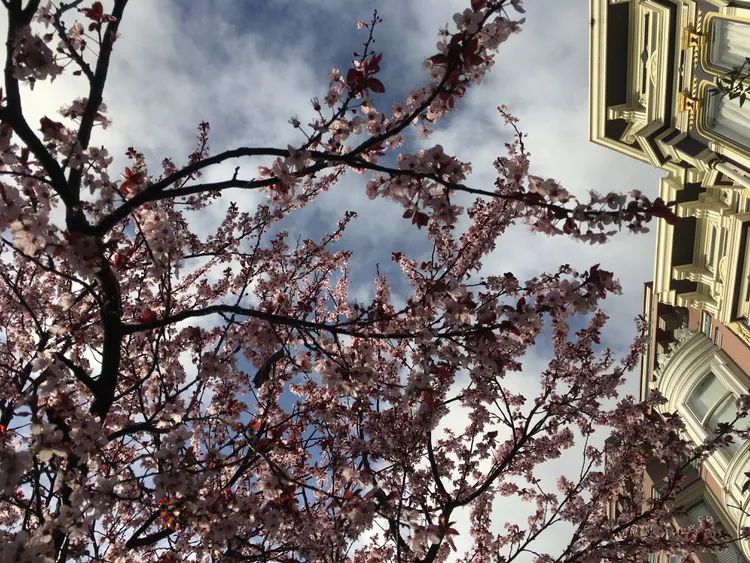1. Overview of the Festival
The Northern California Cherry Blossom Festival (NCCBF) is a vibrant spring celebration held in San Francisco’s Japantown, attracting over 220,000 attendees each year.
2. Rich History
The festival commenced in 1968, aligning with the blooming of cherry blossoms, Japan’s national flower, and reflects the cultural richness of Northern California’s Japanese American community.
3. Experience Highlights
Visitors can enjoy numerous activities, including performance arts, food stalls, workshops, and the much-anticipated Grand Parade.
4. Important Tips for Attendees
Entry is free, but guests are encouraged to bring cash for food and souvenirs, and can enjoy a variety of transportation options to reach the festival.
Officially known as the Northern California Cherry Blossom Festival (NCCBF), this wonderful spring celebration takes place over two full weekends each April in San Francisco’s Japantown and attracts more than 220,000 people annually, making it one of the largest cherry blossom festivals in the U.S. and the largest festival of its kind on the West Coast.
History
San Francisco’s Cherry Blossom Festival coincides with the blooming of its cherry blossoms, trees that flower in various shades of pink and white, representing Japan’s national flower. Moreover, this festival serves as a perfect celebration for the city’s Japantown neighborhood, a six-block enclave centered around the Japan Center. At its core, the festival aims to showcase the diversity of Northern California’s Japanese American community and foster an alliance between the two countries, while also symbolizing the arrival of spring in San Francisco.
Established in 1968 (the same year the Japan shopping center opened), the festival started as a cultural celebration known for its colorful displays and unique activities. It is located in the heart of Japantown, stretching along Post Street between Laguna and Fillmore streets, and is divided into several sections. A notable highlight is the festival’s Grand Parade, a lively procession starting at City Hall that winds its way through Civic Center and culminates in Japantown on the festival’s final Sunday.
What to See & Do
There are numerous activities to participate in at NCCBF, which showcases a variety of entertainment, workshops, and events across two weekends. The festival typically features an arts & crafts area showcasing works by independent artists, a food and drink area serving a selection of Asian cuisine and Sapporo beer, and a cultural section highlighting Japan’s blend of tradition and modernity with offerings like anime, gaming, and fashion. Additionally, a kid’s corner and the Japanese Cultural & Community Center of Northern California (JCCCNC) venue host various traditional performances and cultural exhibits.
The NCCBF’s Peace Plaza Stage is the main performance area, featuring events from the festival’s opening ceremony to gatherings like the Cosplay All-Stars. Meanwhile, the Sakura 360 stage is focused on J-Pop (Japanese pop culture) events, including an anime contest. Attendees can enjoy origami exhibits, traditional arts workshops (like shishu and washi ningyo), martial arts demonstrations, taiko drumming, bonsai displays, and even a ramen noodle eating contest.
Culinary offerings vary from unagi donburi (rice with barbecued eels) and fried mochi to a variety of pan-Asian dishes such as shaved ice and Spam musubi. The popular Hello Kitty Cafe Truck frequently makes an appearance, and there are numerous local restaurants ideal for dining, including Mums – Home of Shabu Shabu and okonomiyaki standout, Mifune Don. Additionally, Sapporo beer is the drink of choice in the festival’s onsite beer garden, strategically located for enjoying live music while sipping.
The festival reaches its peak with the Grand Parade, featuring a Grand Marshal (in 2018, former Olympic champion Kristi Yamaguchi served in this role), alongside classical Buyo (Japanese dance) and Minyo (folk dance) performances, colorful floats, and SF’s own Japanese percussionists Taiko Dojo. The parade also showcases the festival Queen and her court, as well as the Taru Mikoshi, a portable Shinto shrine carried by over 140 individuals down San Francisco’s streets.
During the festival, San Francisco’s cherry trees are typically in full bloom, making it an ideal time to capture stunning photographs, especially in areas like Japantown and the Japanese Tea Garden at Golden Gate Park, which can be explored further by visiting the Japanese Tea Garden’s website.
Things to Know Before Attending
NCCBF hosts a pre-festival poster contest that reflects the theme “One Blossom, One Community, One Heart,” alongside a photography contest where participants capture festival moments. Both contests are open to everyone, with detailed information available on NCCBF’s website.
Although entry to the festival is free, guests should prepare to bring cash for food vendors, artisan souvenirs, and raffle tickets (notably, in 2019, the Grand Prize included roundtrip tickets to Japan along with a two-night hotel stay for two).
Leashed dogs are welcome, and while parking can be limited, there are various transportation options available to reach Japantown. For those traveling via the San Francisco Municipal Railway (MUNI), both the #38 Geary and the #22 Fillmore buses stop nearby. Additionally, visitors coming from the East Bay or SFO can catch a Bay Area Rapid Transit (BART) train to Montgomery Street Station, from which they can board a #38 Geary bus to reach the festival area.





